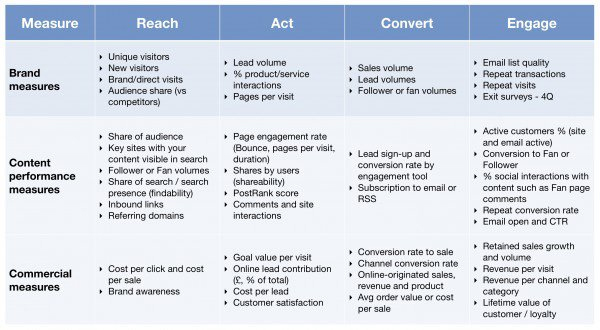Studying? Map, match and measure content to customer journeys

 Much has been written in the last few years about the challenges that marketers face when attempting to demonstrate the return on investment (ROI) from their content marketing strategy. Managed well, content can help brands earn attention and gain trust as consumers continue to research their brand choices online. This article, compiled by Jon Twomey of London’s Student Support Group, shares some of that published wisdom and examines several of the issues surrounding this critical area of marketing communication. Remember, if you need help to support you CIM studies you can call the Student Support Group’s free advice helpline for studying members in London on 01784 463057 or email caroline@studentsupportgroup.co.uk.
Much has been written in the last few years about the challenges that marketers face when attempting to demonstrate the return on investment (ROI) from their content marketing strategy. Managed well, content can help brands earn attention and gain trust as consumers continue to research their brand choices online. This article, compiled by Jon Twomey of London’s Student Support Group, shares some of that published wisdom and examines several of the issues surrounding this critical area of marketing communication. Remember, if you need help to support you CIM studies you can call the Student Support Group’s free advice helpline for studying members in London on 01784 463057 or email caroline@studentsupportgroup.co.uk.
Further information and Mastering Metrics assignment support is available from Student Support Group. Fees apply to some services.
Mapping content to the journey
Back in the old days, customers had a limited choice of channels to use to seek and sort data about a prospective product or service purchase. With the recent explosion of digital devices and channels, marketers need to ensure they are represented wherever their customer may seek them, so doing some customer mapping is the necessary first step.
To ensure you don’t oversimplify the customer journey Google recommends:
- Map the moments: Examine each phase of your customer’s journey and map the moments when people find inspiration, learn about your products, make a quick purchase, or anything in between.
- Identify content: For each of these moments, identify the content that needs to be developed to help make the purchase decision easier or faster for your customer.
- Personalise content: Leverage context to personalise the content. So location, time of day, device used and demographics are needed to align the content with the customer for increased impact.
- Optimise content: Optimise the content in each moment to help move the customer from one moment to the next instead of driving them from awareness through to conversion.
- Measure each step: Measure each of the moments you’ve mapped to identify gaps and fill them.
Matching the content to the mindset
Five dimensions should be evaluated for every piece of content according to Meltwater.
Reader cognition: The audience for your content is diverse, so your content needs to reflect this. The mix of visual, audible and kinaesthetic interaction is needed to reach all readers and reflect their preferences.
Sharing motivation: In today’s connected world, sharing is essential to extend your reach to a wider, relevant audience. According to The New York Times Customer Insight Group whitepaper, The Psychology of Sharing, there reasons why people share content are to:
- increase their value to others
- create an identity online
- involve themselves in their community
- extend their network and
- bring awareness to causes
Persuasion: Research by Dr. Robert B. Cialdini’s identified six principles of persuasion. Consider how effectively your content moves your readers from one moment to the next in their customer journey and satisfies the six principles.
- liking
- reciprocity
- consensus
- scarcity
- consistency
- authority
Decision-making: Everyone is influenced to a greater or lesser extent by a variety of supporting criteria when making a decision. It’s wise reflect these criteria when crafting content:
- trust
- facts
- emotion
- efficiency
External factors: Whilst it’s laudable to focus on the audience for the content your crafting, remember too, that your customers will be influenced by those around them. So consider also your secondary audience of:
- family
- friends
- colleagues
- companies.
Based on an original article from Meltwater, Outside Insight
Measuring the impact
Once you have optimised your content to reflect the different types of journey that your customers make, you’ll then need to find efficient ways to measure the impact of this content. Measures of success range from ‘softer’ tactical engagement metrics to ‘harder’ and more commercial sales measures.
- Tactical measures: For example views, clicks and interactions with your content such as social shares (Likes and Tweets). These prove that your content is visible and worth sharing - so very important
- Brand measures: For example, mentions of your brand name or key-phrases, sentiment, share of market mentions over competitors and site traffic. These performance metrics take more impetus to get moving.
- Commercial measures: For example, audience share, sales, leads or other indicators such as satisfaction ratings. These are typically the measures which the Board are interested to know about.
One way of measuring the impact of content is to link your metrics to each stage of the customer journey (using Dave Chaffey’s RACE mode) – Reach; Act; Convert; Engage.

Measuring social media optimisation
At the centre of a social media optimisation programme your content is marketed via social media as a set of social objects. So you need to develop an analytics dashboard that reviews your effectiveness in promoting these social objects.
Your social objects might be images, videos, blog posts, comments, status updates, wall posts, and all related activity that creates the potential for online conversations. The goal of social media optimisation is to measure, monitor and improve the visibility these social objects in order to connect with people who are looking for information and direction. Because social objects are categorised through keywords, titles, descriptions, and tags, measurement operates in a similar way to search engine optimisation in terms of inbound links, and referring websites where your content - the social objects - are placed.
Analytics to drive content decisions
In addition to measuring the outcomes of your content marketing strategy, consider the questions you might want to ask in order to refine your plans. For example:
- Which key phrases related to social content are most effective at driving visits and outcomes? In answering this question make sure you also know which audience personas those keywords relate to, so that you know who you're writing content for. Build upon the key phrases that are most effective.
- Which referring partner sites or social networks have helped with link generation and measurement for search engine optimisation and driving traffic? Also check the traffic volumes from those domains and see how users segmented by referring domain bounce and click through the site - are their needs being met?
- How does content viewed on click-paths or journeys affect marketing outcomes? This question reviews the value that a user is finding on your website and whether it's influencing leads or sales.
- Are we increasing the proportion of engaged users? Engagement can be short or longer-term - it might be that someone has viewed more than three pages on the site, per session, this is better than time on site. You can consider improving that by designing site journeys that are for specific audiences and creating multiple routes to the important content.
- What are the satisfaction ratings for your content? You can use different customer feedback software to rate your content and specific feedback. Find out what people were looking for against whether they were successful and how satisfied.
Websites and web based content are not brochures. They are never finished. So whilst it’s important to constantly refine your website, focus on testing new things where the analytics and customer feedback indicate that you have the best opportunity to make an improvement.
Based on an original article by Danyl Bosomworth Jan 2014, KPIs for measuring content marketing ROI
Study support in London
In this region we sponsor the Student Support Group’s free advice helpline for studying members. Please contact caroline@studentsupportgroup.co.uk or call 01784 463057.

